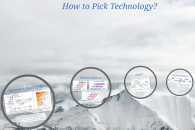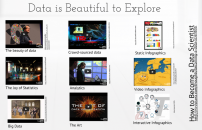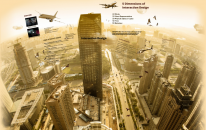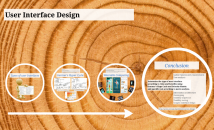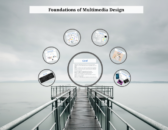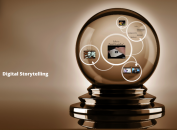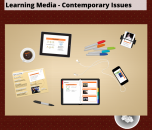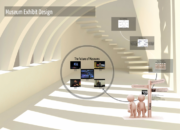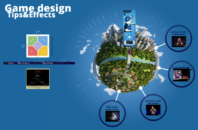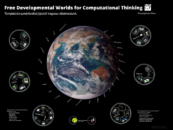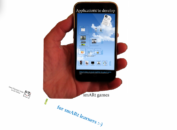Chapters
Scope
Definitions
The QR Code system has become popular outside the automotive industry due to its fast readability and greater storage capacity compared to standard UPC barcodes. Applications include product tracking, item identification, time tracking, document management, general marketing, and much more. Originally designed for industrial uses, QR codes have become common in consumer advertising. Typically, a smartphone is used as a QR-code scanner, displaying the code and converting it to some useful form (such as a standard URL for a website, thereby obviating the need for a user to type it manually into a web browser).
A QR code consists of black modules (square dots) arranged in a square grid on a white background, which can be read by an imaging device (such as a camera) and processed using Reed-Solomon error correction until the image can be appropriately interpreted; data is then extracted from patterns present in both horizontal and vertical components of the image.
A barcode is an optical machine-readable representation of data relating to the object to which it is attached. Originally barcodes systematically represented data by varying the widths and spacings of parallel lines, and may be referred to as linear or one-dimensional (1D). Later they evolved into rectangles, dots, hexagons and other geometric patterns in two dimensions (2D). Although 2D systems use a variety of symbols, they are generally referred to as barcodes as well. Barcodes originally were scanned by special optical scannerscalled barcode readers. Later, scanners and interpretive software became available on devices includingdesktop printers and smartphones.
Augmented reality (AR) is a live, direct or indirect, view of a physical, real-world environment whose elements are augmented (or supplemented) by computer-generated sensory input such as sound, video, graphics or GPS data. It is related to a more general concept called mediated reality, in which a view of reality is modified (possibly even diminished rather than augmented) by a computer. As a result, the technology functions by enhancing one’s current perception of reality. By contrast, virtual reality replaces the real world with a simulated one. Augmentation is conventionally in real-time and in semantic context with environmental elements, such as sports scores on TV during a match. With the help of advanced AR technology (e.g. adding computer vision and object recognition) the information about the surrounding real world of the user becomes interactive and digitally manipulable. Artificial information about the environment and its objects can be overlaid on the real world.
A fiducial marker or fiducial is an object placed in the field of view of an imaging system which appears in the image produced, for use as a point of reference or a measure. It may be either something placed into or on the imaging subject, or a mark or set of marks in the reticle of an optical instrument.
The Augmented Reality Markup Language (ARML) is a data standard to describe and interact with Augmented Reality (AR) scenes. It is developed within the Open Geospatial Consortium (OGC) by a dedicated ARML 2.0 Standards Working Group. ARML consists of both an XML grammar to describe the location and appearance of virtual objects in the scene, as well as ECMAScript bindings to allow dynamic access to the properties of the virtual objects, as well as event handling, and is currently published in version 2.0. ARML focuses on visual Augmented Reality (i.e. the camera of an AR-capable device serves as the main output for Augmented Reality scenarios).
Other remarkable codes:
– d-touch is a visual marker recognition system that supports markers that are both machine-readable and visually communicative to humans. It allows users to create their own visual markers (pdf), controlling their aesthetic qualities and what they visually communicate to others.
Thus d-touch can enhance most applications normally supported by visual markers, including interactive guides, mobile service access, mobile games, interactive story telling systems and augmented reality applications.
References: Definitions and links (unless otherwise indicated as “site” or “pdf”) are copied and edited from English Language Wikipedia as of 1st September 2013. Titles could be further explored through indicated links.
Research
Case-studies
T@T lab case-studies:
Turcsányi-Szabó,M., Augmented Edutainment on campus, In ed. Gardner, M., Garnier, F., Delgado Kloos, C., Proceedings of 2nd Immersive Education Summit, pp. 204- 209. Paris, France, Universidad Carlos III de Madrid Departamento de Ingeniería Telemática, 2012. ISBN: 978-84-695-6427-1 Also at http://europe.immersiveeducation.org/sites/default/files/2nd_European_Immersive_Education_proceedings.pdf
(see TSzM2.pdf)
IP4ET https://prezi.com/xt3xcxzzaokm/elte-ik-tt-lab-ip4et/
- AR cube http://arportal.elte.hu/elteflar/elte.php
- ePOI https://www.youtube.com/watch?v=45w0rDIriAY
- QR course http://create.mome.hu/ruttkay/qr/
- QR hibajavítás Prezi https://prezi.com/exkwf-ezjffk/hibajavitas-qr-kodokban/
- QR Semmelweis muzeum video https://www.youtube.com/watch?v=gxfgUCdf0Fg
- https://prezi.com/mvhchsjzh0n4/elmeny-is-lehet-az-informatika/

